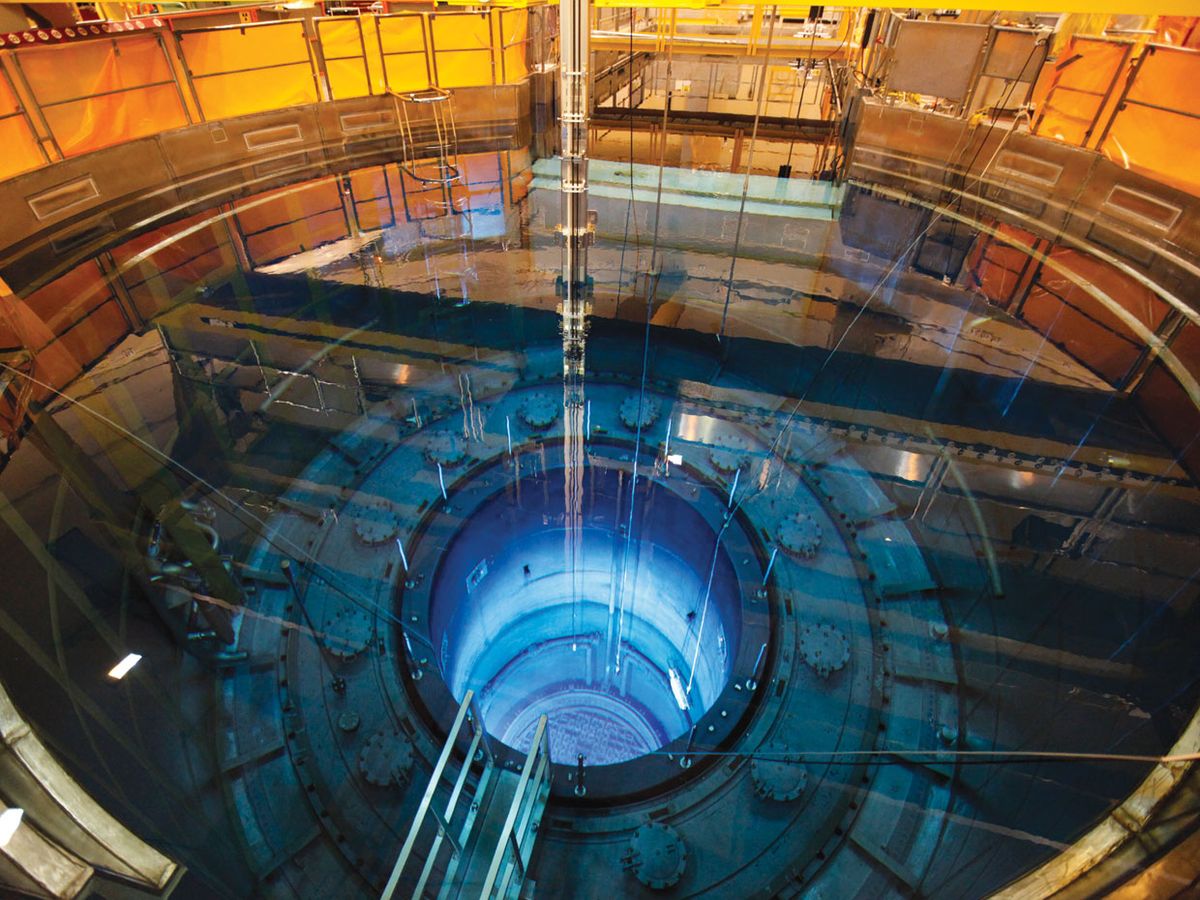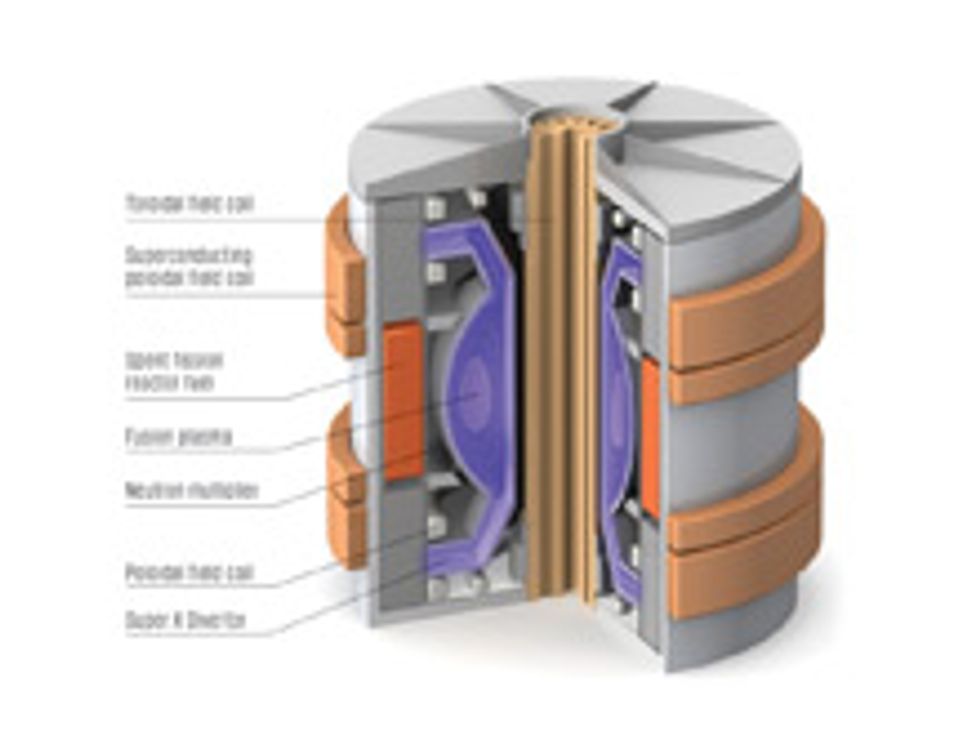What if you could help solve the nuclear waste problem and at the same time give fusion research a new raison d’être? A trio of physicists at the University of Texas at Austin have dreamed up a trick to pair nuclear fusion and fission in a way they think could open more promising futures for both technologies.
Their idea is to surround a compact, circular tokamak fusion reactor they have devised with a ring containing the most noxious waste products from nuclear power plants. Neutrons emanating from the fusion reactor would break down long-lived transuranic radio active wastes from spent fuel and turn them into much shorter-lived elements. The net effect would be to convert high-level radio active wastes containing elements like americium and curium, which need to be stored safely for 100 000 years or more—a problem that has derailed big storage projects like Yucca Mountain—into fission products, such as barium, that fully decay in hundreds of years.
But this scheme wouldn’t work unless scientists and engineers could come up with a neutron source that was simultaneously intense and compact. A source like that would have its own waste disposal problem: The plasma core would emit heat and a flow of particles so intense they would destroy the machine.
In a standard tokamak, magnetically confined deuterium and tritium fuse in a plasma, releasing neutrons, electrons, and alpha particles (helium nuclei). The magnetic field lines confining the plasma consist of open regions—where the lines penetrate the reactor—and closed regions, where they form self-contained ovoids. At the so-called X‑point where the lines are open, the plasma can be tapped to let unburned ions escape, transferring their heat to a metallic plate. The rub is that in some tokamaks, that concentrated stream of plasma would melt any conceivable plate.
The Texas team of researchers—Swadesh Mahajan, Mike Kotschenreuther, and Prashant Valanju—came up with the idea of redesigning the fields to broaden the X‑point and channel the ash stream into a divertor, where they would place a second X-point well away from the main plasma. Fanning out from the second X‑point, the wider waste stream would be able to transfer 5 to 10 times as much heat, or 10 megawatts of heat per square meter.
This design, called the Super X Divertor [PDF], will be put to the test as a centerpiece of a £30 million (US $48 million) upgrade to the MAST, or Mega Amp Spherical Tokamak, at the Culham Science Center in Abingdon, England, according to the center’s CEO, Steve Cowley.
The researchers at Culham aren’t really interested in turning this tokamak into a spent fuel transmutation unit, but the 12-year-old fusion machine, when upgraded and operating again in 2015, will be similar to such a unit. In the transmutation scheme, a modular spherical tokamak is surrounded by a blanket of spent fuel rods. The physical arrangement is rather like that of a standard fast-breeder reactor, in which neutrons emitted from a core of plutonium or highly enriched uranium are captured in a blanket consisting of nonfissionable uranium-238, which transmutes to fissionable plutonium. The Super X Divertor will make it possible to design and build a tokamak compact enough to emit the dense cloud of neutrons needed to transmute nuclear wastes.
For the record, the Texas team is not the first to propose using fusion-generated neutrons to chop the half-lives of fission wastes. Ideas for fission hybrids have been kicking around since the 1950s. Several years ago, Weston M. Stacey of Georgia Tech came up with what Mahajan calls the “canonical concept” for a hybrid in which a fission reactor would be embedded inside a large tokamak, a vision Stacey calls the Subcritical Advanced Burner Reactor.
Separately, the Nobel Prize–winning physicist Carlo Rubbia has talked up the idea for two decades of having protons from an accelerator bombard a target, knocking off neutrons, which in turn do the work of fracturing transuranics. A test of that approach began last January, at the Belgian Nuclear Research Centre, in Mol, when an accelerator and reactor were linked for the first time.
An obvious problem with Stacey’s hybrid is how to implant and remove fuel from—not to mention maintain—a fission reactor that is surrounded by a tokamak generating hugely energetic plasma fluxes. The obvious problems with accelerator-driven systems, says Mahajan, are their relatively unattractive neutron economics and the rather Rube Goldberg-esque sense of the overall system design.
But the Texas approach also could look increasingly like one of Goldberg’s mad engineering drawings as the specific details are fleshed out. For example, for the transuranic waste to be fully converted to shorter-half-life elements, three stages of fuel reprocessing would be required, with extracted elements reinserted into the tokamak blanket for further fissioning. Right now only the Super X Divertor is a well- developed design.
This article originally appeared in print as “A Fission-Fusion Fusion.”




